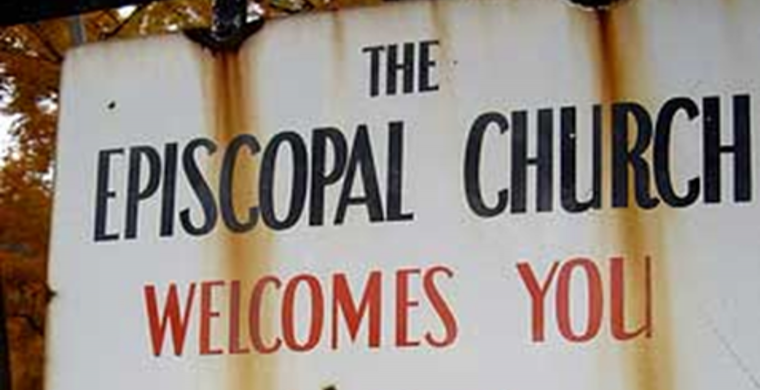THAT INCREDIBLY SHRINKING EPISCOPAL CHURCH
By David W. Virtue, DD
www.virtueonline.org
October 9, 2020
The Episcopal Church Office of the General Convention has released 2019 statistics for membership, attendance and plate-and-pledge. By any statistical analysis, the Episcopal Church is heading into oblivion. Please note these are pre-Covid figures.
When he was once asked about church growth, Curry opined that evangelism was not about growing the church. He might want to reflect on that statement based on the new realities that TEC faces the bonfire of the vanities. TEC is looking down a black hole with aging congregations, rapidly aging priests and no new generation of young Episcopalians filling pews.
Year over year, average Sunday attendance numbers have fallen. Efforts to double the church by 20/20, and, more recently TREC, - a Taskforce for Reimagining the Episcopal Church begun in 2014, have failed to reignite imaginations or jumpstart church growth.
Statistics recently released by the Office of the General Convention show membership in an uninterrupted drop of 38,404 persons to 1,637,945 (-2.29%) in 2019, while average Sunday attendance declined 13,547 persons to 518,411 (-2.25%).
Across the denomination, three-quarters of Episcopal parishes now have an average attendance of fewer than 100 persons. Median attendance across the church has dropped from 53 to 51 in the past reporting year. During the past five years, 61% of congregations have seen attendance declines of 10% or more, up from 59% the prior year.
With an ASA figure of 518, and 411 in 2019, there can be little doubt that with continued statistical shrinkage plus COVID, that figure will be well under 500,000 in 2021. Hundreds of churches may never open again. People get comfortable with the status quo.
Furthermore, there is no evidence that a turnaround is likely or even possible. The embrace of homosexual marriage, the final spoke in the pansexual wheel of episcopal fortune, has been the lightning rod for two major defections from the Episcopal Church in recent months. The first was former Central Florida Bishop, John W. Howe and the second is the soon to be deposed Bishop of Albany, William H. Love, who was found guilty for failing to embrace Resolution B012. His fate is currently being weighed by PB Michael Curry and a hearing panel.
His ecclesiastical death is assured, his spiritual death wildly exaggerated.
Consider these facts:
Between 2018 and 2019, the following dioceses dropped by more than 300 in ASA. They are among the hardest hit dioceses in TEC.
Mass: 520; New Hampshire: 617 (former diocese of Gene Robinson); Western Mass: 348; Albany: 379; Haiti: 799; Long Island: 623; New York: 308; Newark: 566; Maryland: 388; PA: 352; Washington: 441; SE Florida: 363; SW Florida 514; Chicago: 387; Texas: 415; Los Angeles: 560; Columbia: 503; and Honduras: 350.
A handful of dioceses posted double digit gains, including the U.S. Virgin Islands up 42 persons (3.4%), Pittsburgh up 50 (2.2%), South Carolina up 34 (1.2%), South Dakota up 21 (1.2%), West Missouri up 66 (2.4%), San Joaquin up 14 (1.9%), Spokane up 20 (1.3%) and Alaska up 58 (5%). The smallest domestic U.S. dioceses continue to be Northern Michigan at 385 attendees (down 9 persons or 2.3%) and Navajo Missions at 167 attendees (down 14 persons or 7.7%). Global South observers must wonder how entire dioceses with ASA of 385 and 167 respectively can even be recognized as legitimate dioceses, propped up by money from the national church. At one point in time, Northern Michigan had a Buddhist running for bishop!
Basic take-away: two groups of dioceses are being hit especially hard: firmly revisionist dioceses like Newark and New Hampshire, and formerly orthodox dioceses that have more recently gone revisionist, such as Northern Indiana, Fond du Lac and Eau Claire, wrote IRD Anglican writer, Jeff Walton.
Presiding Bishop Michael Curry’s hope that his endless talk of ‘love’ and ‘beloved community’ would reverse the Church’s diminishing fortunes and hopefully pour new life into a morally and theologically flawed Church, appears to be a false optimism. It is not happening.
As Walton observes, what we’re also seeing is a “tale of two churches” on the parish level, with attendance: 61% of parishes have declined 10% or greater in the past five years (up from 59%) but 15% of parishes have grown 10% or greater in the past five years (up from 14%). This shows that a small, but significant minority of Episcopal parishes are enduring and even thriving, while the vast majority are tanking and won’t survive long-term.
One hopes that 815 will release the full statistical that will include data on baptism, marriage, confirmation, reception and burial numbers. Those figures are key to understanding what the church will look like in 20 years, whereas membership, attendance and plate-and-pledge are indicators of how the church is doing at present.
Where orthodoxy is optional, orthodoxy will sooner or later be proscribed, wrote theologian Richard John Neuhaus. Today we can say that revisionism is the deathwatch beetle boring the Church from within and in time, killing it off.
The Episcopal Church is reaping what it has sown. It is reaping the whirlwind.
END














